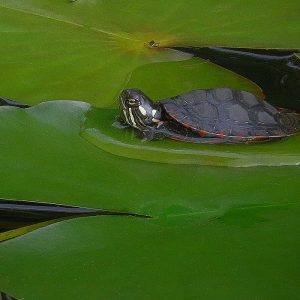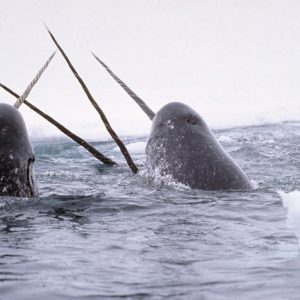Navigating Tree Frogs in Your Region
Find out information on each of the species below and how you can identify the frogs you find!
How many types of tree frogs are there in Canada?
According to the Canadian Wildlife Federation, seven species of tree frogs reside in Canada:
- Northern Cricket Frog (aka Blanchard’s Cricket Frog) – Acris crepitans
- Western Chorus Frog (aka Western Striped Chorus Frog) – Pseudacris triseriata
- Boreal Chorus Frog – Pseudacris maculata
- Pacific Tree Frog (aka Pacific Chorus Frog) – Pseudacris regilla
- Spring Peeper – Pseudacris crucifer
- Cope’s Gray Tree Frog – Hyla chrysoscelis
- Gray Tree Frog (aka Tetraploid Gray Tree Frog) – Hyla versicolor
Tree frogs can be found just about anywhere in Canada, although some species are exclusive to certain regions. A comparative glance between two different species may not reveal any obvious resemblance. In addition, consistent identification of any one species may be difficult because many of these frogs change colours rapidly.
Learn how to navigate tree frogs in your region! As a helpful guide, here are some characteristics specific to each kind:
- Distribution: In Canada, they are only found on Pelee Island, Ontario
- Texture: Rough, wart-covered skin
- Colour: Hues of gray, greenish-brown, yellow, red and black
- Markings: A dark “V” sits between its eyes
- Size: About 4cm long
- Habitat: Marshes, quarries, ditches and warm Carolinian forests
- Diet: Small insects
- Overwintering strategy: Nestles under rocks and logs
- Status: Endangered (federally and provincially) – habitat loss and damage from pesticides are known issues.
- Distribution: Southern Ontario and southern Quebec
- Texture: Smooth
- Colour: Gray, green or brown
- Markings: Distinguishable dark eye stripe; white stripe aligned with top lip; three dark stripes on its back – the middle stripe is generally solid
- Size: Up to 4 cm
- Habitat: Woodland ponds; avoid ponds with fish; forest openings
- Diet: Insects and other invertebrates
- Overwintering strategy: Dwell beneath the ground or under a log; freeze-tolerant
- Notable behaviour features: Modest climbers – reaching the height of a shrub
- Status: Threatened – Great Lakes/ St. Lawrence region (Canadian Shield population) – federally protected under SARA; habitat loss cited as the main issue
- Distribution: More widely distributed than the similar-looking Western Chorus Frog – but does not overlap in its range; can be found from Quebec to BC, and up north in Yukon and the Northwest Territories
- Texture: Smooth
- Colour: Gray, green or brown
- Markings: Same as the Western Chorus Frog, but the middle stripe is usually broken-up
- Size: 4cm; hind legs are shorter than those of the Western Chorus Frog
- Habitat: Woodland ponds; avoid ponds with fish; forest openings; tundra (up north)
- Diet: Insects and other invertebrates
- Overwintering strategy: Dwell beneath the ground or under a log; freeze-tolerant
- Notable behaviour features: Modest climbers – reaching about the height of a shrub; longer and slower mating call than the Western Chorus Frog
- Status: Not at risk/low priority
- Distribution: Exclusive to BC (Canada)
- Texture: Smooth to rough
- Colour: Green, brown, gray or tan
- Markings: Dark stripes stream down each eye
- Size: Up to 5 cm; small and lean; large, sticky pads on their toes
- Habitat: All aquatic/moist environments, forests, mountains and desert steppes
- Diet: Insects – especially flying insects – and other invertebrates
- Notable behaviour features: Able to rapidly change colours for camouflage (or due to temperature fluctuations); very versatile habitat range
- Status: IUCN – Species of least concern
- Distribution: Manitoba to PEI
- Texture: Smooth
- Colour: Brown, tan, green or gray; “bark-coloured”; white or cream belly
- Markings: Distinctive “X” marked on its back
- Size: About 3cm; large toe pads
- Habitat: Aquatic areas and woodland ponds; vulnerable to the effects of urbanization
- Diet: Insects
- Overwintering strategy: Retire under logs or tree bark; freeze-tolerant
- Notable behaviour features: One of the first frogs to be heard singing in the spring; shrill, repetitive call; good at camouflaging
- Status: Not at risk/low priority
- Distribution: Found only in southeastern Manitoba and western Ontario
- Texture: Rough
- Colour: Green, brown or gray; thigh interior is orange
- Markings: Dark “blotches” scattered on its back; large, bright circle under its eyes that is darkly outlined
- Size: Up to 6cm; large toe pads
- Habitat: Trees and shrubs surrounding aquatic regions; prefer older forests
- Diet: Insects and other invertebrates
- Overwintering strategy: Remain under leaf litter and snow; freeze-tolerant
- Notable behaviour features: “Fast, high-pitch call” (the only factor that recognizably distinguishes it from the Gray Tree Frog); climbs tall trees; can quickly change colours
- Status: Not at risk
- Distribution: Anywhere from Manitoba to New Brunswick; overlaps with Cope’s Gray Tree Frog
- Texture: Rough
- Colour: Gray, brown or green; thigh interior is yellow-orange; camouflages itself based on surroundings (hinted in the latter part of its Latin name, “versicolor”)
- Markings: Dark “blotches” scattered on its back; large, bright circle under its eyes that is darkly outlined
- Size: Up to 6cm
- Habitat: Trees and shrubs surrounding aquatic regions; prefer older forests
- Diet: Insects and other invertebrates
- Overwintering strategy: Remain under leaf litter and snow; freeze-tolerant
- Notable behaviour features: “Short, flutey call”; avid tree climber – described as “highly arboreal”; a “true tree frog”
- Status: Not assessed – likely abundant; deforestation could pose a threat



